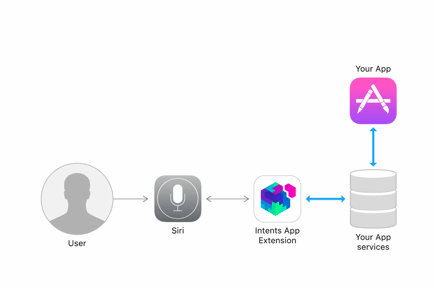No one ever talks about Siri in the workplace. Does Apple’s assistant have a place?
Digital assistants keep making more and more appearances in platform software.
Apple iPhones seem ubiquitous in the enterprise, and, at the same time, digital assistants are entering the enterprise workspace, so why don’t we hear more about organizations using Siri?
We’ve been keeping an eye on digital assistants and their business angles since I started at BrianMadden.com. I’ve also begun 2020 with a look at the recently released Citrix’s Workspace intelligent experience and VMware’s Workspace ONE Intelligent Hub Assistant.
Both digital assistants require that the users have their respective app open in order to interact with them, which leaves an opening for Siri—as well as Alexa for Business and Google Assistant—to potentially find use.
Let’s look at how easy it would be to add Siri integration to applications and whether we might see it in either of VMware or Citrix’s workspace apps in the future.
Custom Siri intents
Apple developed custom intents as a way to build in Siri integration for third-party applications. It allows users to interact with Siri in your app via shortcuts. This capability first appeared in iOS 11.
In theory, custom intents are quite simple: the user makes a request from Siri, which connects to the Intents App Extension, then to your app services, and finally interacts with your app.

To get an app to work with custom Siri intents, developers need to do a few things through SiriKit. The first task is to enable Siri capability within your iOS app. To have Siri work outside the app itself, you also need to add targets (e.g., the Intents Extension to be used—some examples include content blockers, iMessage, etc.), from within the Intents Extension and Intents UI Extension menu. Once done, it’s time to create the Siri Intent Definition File to explain what your custom intent is designed to do.
With that all in place, you can begin to build out your custom intent. You’ll fill out a short description of the custom intent, title, whether user confirmation is required, input parameters, and shortcut types, and Siri response (e.g., responses for the app failing, completing the requested query, etc.). An example parameter you might use could include saying the name of a city a user might want to know the weather of, if your app shows weather forecasts.
Obviously, you’ll also have to design your app with policies about what types of potentially sensitive data is shared via Siri and when.
Will we see Siri involved with Workspace or Workspace ONE?
Citrix and VMware have their own assistants, but both require the app to be open, so I wanted to ask if we might see integration with Siri in the future.
All Citrix would tell me is that Siri integration is currently planned. In a Citrix Synergy 2019 session on their new virtual assistant, one presentation slide showed it eventually working alongside other digital assistants, specifically mentioning Alexa and Google Assistant.
When I reached out to VMware for comment, they told me, “Our assistant supports native voice control (Keyboard dictation) on iOS and Android allowing users to communicate with the assistant via voice instead of typing in their questions. With this capability users get hands free communication when using Virtual Assistant within the Intelligent Hub app.”
Do we need this?
While Apple developed the capability to integrate Siri use into third-party apps, we also need to ask ourselves whether we really want to let Siri and other digital assistants interact with workspace-oriented apps. Is your organization OK with the idea of an employee simply saying, “Hey Siri” when the app isn’t open or with the device locked and being able to interact with it? Maybe you’re alright with ambient interaction when the app is already open and ready for use on the device?
Part of deciding whether organizations may want Siri, and other digital assistants, integrating with the workspace apps is considering the use cases where it may actually be useful. Hands-free interaction could be useful while an employee is in their car and have Siri read out their microapp notifications and even allow for some interaction or to ask for employee contact information. Maybe something like, “Hey Siri, read my Intelligent Hub notifications; OK, approve that expense report.”
Final thoughts
While I hear a lot about iOS dominating workplace adoption through industry conversations, Siri almost never comes up, let alone Alexa, Google Assistant, and Cortana, so it might not be too surprising to see that Citrix and VMware opted for their own digital assistants.
But why couldn’t Siri, or any of the others, be implemented more widely? As discussed, it wouldn’t be a herculean task for vendors to add Siri integration to help provide some limited hands-free tasks for employees.








